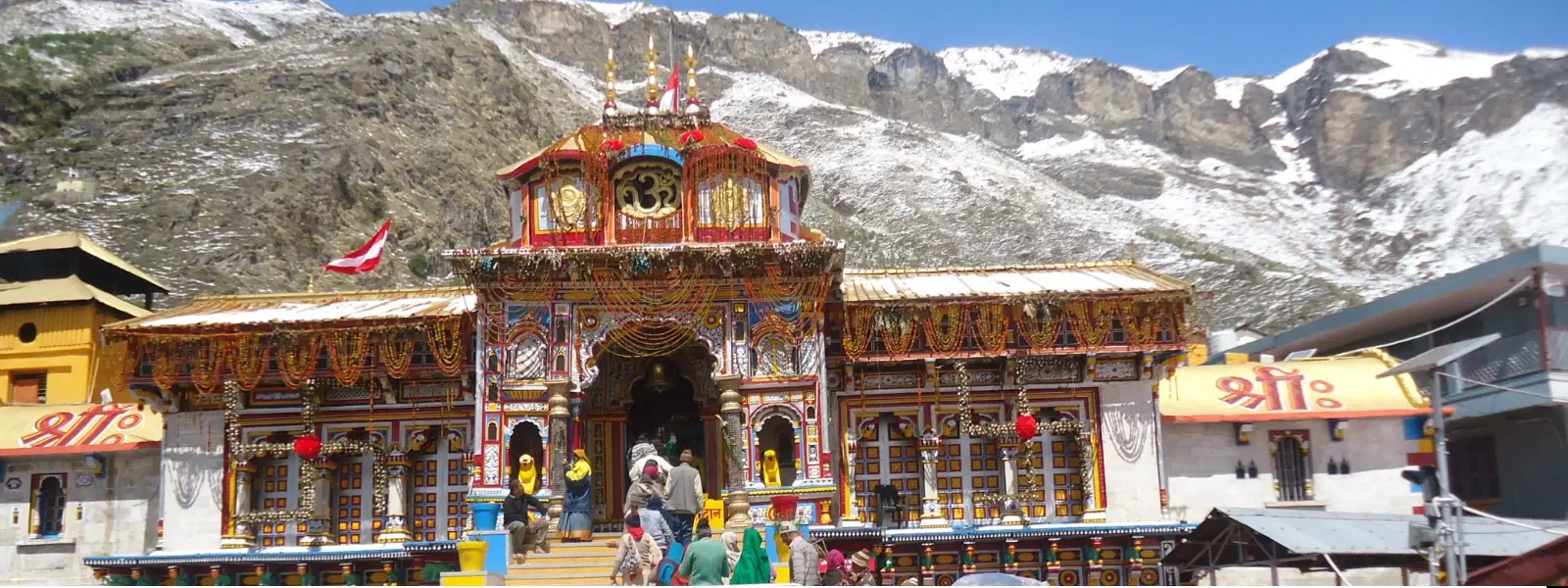
Hotels
•05 min read

Badrinath and Kedarnath are not just pilgrimage sites; they are a feast for the eyes with their majestic Himalayan backdrops and serene landscapes. Timing your visit to these sacred destinations can elevate your experience, ensuring that you witness stunning views with optimal weather and minimal crowds. In this guide, you'll discover the best times to visit Badrinath Kedarnath, learn about the seasonal changes, and get practical travel tips to plan your perfect trip.
The weather and seasonal shifts in the Himalayas largely shape the experience of a trip to Badrinath and Kedarnath. The journey becomes not only a spiritual expedition, but also an adventure into nature's whimsical moods. Each season offers its own set of challenges and delights, making it imperative to plan your trip during the best season for a Badrinath Kedarnath trip to ensure safety and enjoyment.
The weather in Badrinath Kedarnath varies dramatically throughout the year. From the warm and inviting breezes of summer to the crisp, icy air during winters, every season paints a different picture. Understanding these fluctuations helps travelers prepare for the conditions they will encounter, ensuring a comfortable and safe journey through these sacred valleys.
Another essential factor to consider is the change in accessibility and crowd density. The peak tourist time for Badrinath Kedarnath generally falls during the high summer season, when the temples are bustling with devotees and tourists alike. If you’re curious about when there is less rush in Kedarnath, consider planning your visit during the shoulder seasons. This strategy not only ensures a more personal experience but also guarantees ample opportunities to capture breathtaking views without the hustle and bustle.
Dividing the year into distinct seasons can help in understanding the pros and cons of each period. Each season offers its own charm when it comes to exploring these majestic sites.
Summer is often regarded as the best time to visit Badrinath Kedarnath. The weather during these months is mild, making it perfect for exploring the temples and enjoying the natural beauty around. During a summer visit to Badrinath Kedarnath, visitors experience open temple doors, clear skies, and pleasant temperatures that boost the overall experience.
While the monsoon season brings refreshing rains and lush greenery, it also poses unpredictable challenges such as landslides and slippery roads. Monsoon travel to Badrinath Kedarnath is not recommended for everyone, but if you enjoy the idea of secluded landscapes and misty views, and if you're well-prepared for sudden weather changes, then this could be a rewarding time to visit.
Winter transforms the region into a snowy wonderland offering a completely different perspective on these hallowed grounds. While the Badrinath snowfall time promises mesmerizing views, the colder temperatures and temple closures necessitate careful planning. Visitors asking, "Can we visit Badrinath in December?" should note that while the temple may be closed, the surrounding natural beauty more than compensates for the inconvenience.
Choosing the perfect time to visit is key to maximizing your experience. Here are seven specific periods that stand out as ideal for witnessing the magic of these destinations:

At the onset of the pilgrimage season, early May marks the reopening of temple doors. The weather remains pleasant, and the burgeoning greenery adds a fresh vibrance to the surroundings.
Mid-June offers a calm period before the onset of the monsoon. The temperature is still comfortable, and the landscape is in full bloom – a perfect backdrop for capturing unforgettable moments.
After the rains, the environment in and around Badrinath Kedarnath is lush and vibrant. With the weather transitioning to a cooler climate, September offers clear skies and a rejuvenated natural vista.
October brings the first hints of winter with crisp air and a serene atmosphere. The changing colors of autumn mixed with the early touches of snow create a unique and peaceful experience.
As winter sets in fully, November offers the magic of snow-capped peaks and a tranquil environment ideal for introspection and spiritual rejuvenation.
The arrival of spring in April marks a period of revival. The region bursts into bloom with fresh foliage and mild temperatures, making it one of the ideal months to visit Badrinath Kedarnath for nature lovers.
Festivals in these regions offer a vibrant insight into their rich cultural heritage. In addition to natural beauty, special spiritual events during these periods provide a memorable and immersive experience well worth the timing.
A successful trip involves meticulous planning, and keeping these tips in mind will enhance your journey:

Finding the right place to stay is crucial when preparing for your journey. Research accommodation near Badrinath Kedarnath that meets your needs during both peak and off-peak seasons. Whether you prefer a comfortable hotel or a quaint guest house, exploring different hotel options in Badrinath Kedarnath can ensure that you have a cozy retreat after a day of adventure.
In addition to comfortable accommodation, consider these essential travel tips for Badrinath Kedarnath: pack smart, check weather forecasts in advance, and maintain good physical health for the rigorous journey. Plan your transportation carefully, bearing in mind that the terrain is challenging and roads may close during adverse weather.
If a peaceful and intimate experience is what you seek, plan your visit during off-peak hours or seasons. Avoiding the major rushes not only makes for a more serene experience but also allows you to enjoy the majestic views without distractions.
Pro Tip: Timing is Everything!
Did you know? The best way to enjoy the serene beauty of Badrinath and Kedarnath is to visit during the shoulder seasons—May or September. These months offer pleasant weather, fewer crowds, and uninterrupted views of the majestic Himalayan peaks.
May and September are considered the best months to visit Badrinath due to the pleasant weather and stunning views they offer.
The ideal time to plan a trip is between May and June or during the transition period in September and October for the best experience.
Visiting Kedarnath in May and early June provides the most favorable conditions with mild weather and accessible temples.
The months of September and October are perfect if you want to avoid large crowds while still enjoying pleasant weather conditions.
Even though the temple remains closed during December, the region transforms into a snowy paradise, offering breathtaking views of nature in its winter splendor.
In summary, the best time to visit Badrinath Kedarnath depends on your preference for weather, crowd sizes, and the overall atmosphere you are seeking. Whether you choose the vibrant freshness of spring, the quiet beauty of the shoulder seasons, or the icy charm of winter, proper planning—including choosing the right season and accommodation—ensures an unforgettable experience in these sacred Himalayan landscapes.